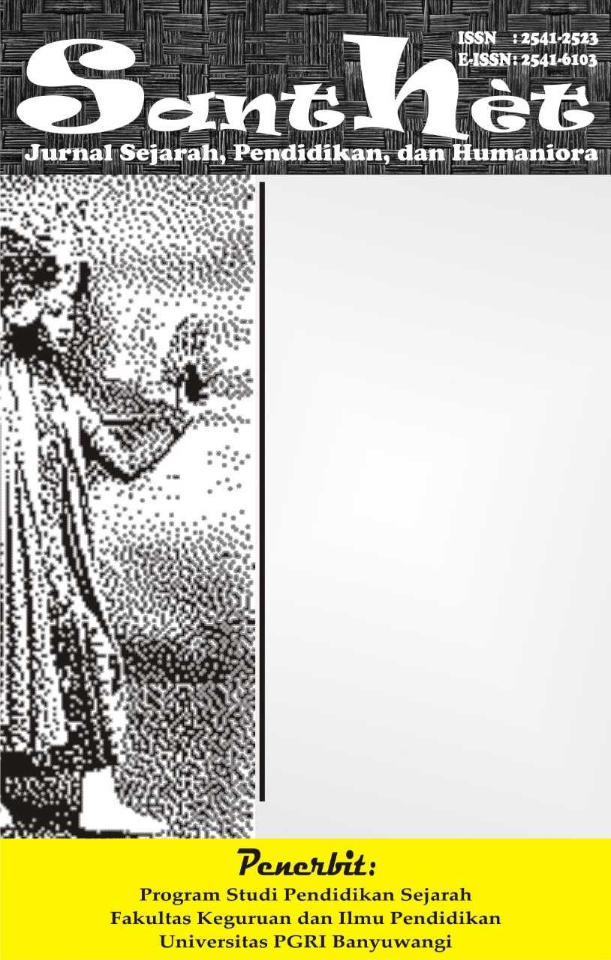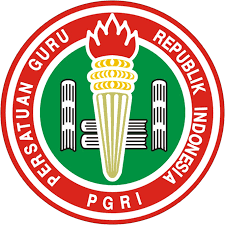The Conservative Role of Aboriginal Wind of Instruments
DOI:
https://doi.org/10.36526/santhet.v6i2.2205Keywords:
Australia, Original Culture, DidgeridooAbstract
Australia is used as one of the countries that overshadow the Australian continent. Civilization from the Australian continent itself emerged with the initial presence of the British arrival to Australia in the form of decolonization. This is what causes cultural acculturation to experience continuity in it. However, the main issue is whether there is a return to the original culture that is maintained by the Aboriginal Tribes as the original tribes that inhabit the Australian continent to be passed on to their generations. Apparently, the original culture is contained in a wind instrument called the Didgeridoo. Didgeridoo is used as a musical instrument that has a conservative role in relaxation for its listeners. In fact, this wind instrument has also been declared the oldest musical instrument from Australia which has a long estimate of the beginning of its civilization. This is what makes it a point in historical value with outstanding usefulness values in the use of Didgeridoo which is associated with the past to the modernized era in order to preserve the musical instrument by holding an exhibition in it to introduce and show how to play it for many people which listening it.
References
Banoe, P. (2013). Metode Kelas Musik. Jakarta: Indeks.
Bolton, B. (2012). Stories of the Outback . Australia: Brolga Publishing.
Eley, R. (2013). The Potential Effects of the Didgeridoo as an Indegenous Intervention for Australian Aborigines: A Post Analysis. Music and Medicine, 5(2), 84-92.
Elferen, I. V., & Weinstock, J. A. (2016). Goth Music: From Sound to Subculture. New York: Routledge.
Ezoteriker. (2022). Alat Musik Aborigin Australia; Didgeridoo Adalah Alat Musik Tiup Aborigin Australia; Sejarah Instrumen Australia. https://ezoteriker.ru/id/muzykalnyi-instrument-aborigenov-avstralii-didzheridu--/.
Fox, H. B. (2012). The Healing Way of Beauty: A Manual for Holistic Health, Wellness, Balance and Recovery . Canada: University of Saskatchewan Press.
Gardiner, J. C. (2013). The Dawn of Life and Other Australian Tales. Australia: Inspiring Publishers.
Grant, J. (2020). The Electric Didgeridoo. Quadrant, 64(8), 83-90. Retrieved from https://search.informit.org/doi/abs/10.3316/informit.233098489066534
Hamen, S. (2013). Australia. Minnesota: ABDO Publishing Company.
Hindle, A., & Posnett, D. (2017). Performance with an Electronically Excited Didgeridoo. NIME.
Hokianto, H. (2021). Kunjungan ke Pameran Virtual Yidaki: Didgeridu and The Sound of Australia . https://mediaindonesia.com/humaniora/418932/kunjungan-ke-pameran-virtual-yidaki-didgeridu-and-the-sound-of-australia.
Institute Kesenian Jakarta. (2019). Kimberley Indonesia Project. https://ikj.ac.id/kronik-seni/kimberley-indonesia-project/.
Janke, T. (2021). True Track. Australia: University of New South Wales Press.
Keduataan Besar Australia Indonesia. (2022). Pekan NAIDOC 2022: Merayakan Budaya Penduduk Asli Australia. https://indonesia.embassy.gov.au/jaktindonesian/SM22_018.html.
Koetjaraningrat. (2015). Pengantar Ilmu Antropologi. Jakarta: Rineka Cipta .
Koumoulas, M. (2019). Didgeridoo Notation. York Space Institutional Repository. Retrieved from http://hdl.handle.net/10315/36211
Liputan 6. (2012). Didgeridoo, Uniknya Alat Musik Khas Australia. https://www.liputan6.com/news/read/458070/didgeridoo-uniknya-alat-musik-khas-australia.
Living Arts Collection. (2020). Blowing The Trumpeth. UK: BrambleKids Ltd.
Longdon, E. (2020). Vibrational Sound Healing. Vermont: Healing Arts Press.
Lopez, S., & Atkinson. (2017). The Didgeridoo, an Instrument of Oppression or Decolonisation? Feminism(s) in Early Childhood, 25-33. Retrieved from https://link.springer.com/book/10.1007/978-981-10-3057-4
Phillips, K. H., Brintz, C. E., Moss, K., & Gaylord, S. A. (2019). Didgeridoo Sound Meditation for Stress Reduction and Mood Enhancement in Undergraduates: A Randomized Controlled Trial. SAGE Journals.
Ribawati, E. (2022). Australia & Oceania Dalam Sejarah. Tangerang: Media Edukasi Indonesia.
Santana, J. A. (2016). Altjeringa and didgeridoo: Australian Identity Devices on Polyphonic Spatiality of The Adventures of Priscilla, Queen of the Desert, Stephan Elliott. SciELO, 69(2). doi:https://doi.org/10.5007/2175-8026.2016v69n2p127
Siboro, J. (2018). Sejarah Australia. Yogyakarta: Ombak.
Smith, M., & Richards, G. (2013). The Routledge Handbook of Cultural Tourism. London: Routledge.
Sukmadinata, N. S. (2020). Metode Penelitian Pendidikan . Bandung : Remaja Rosdakarya.
WIPO Team. (2018). Protect and Promote Your Culture. Switzerland: World Intellectual Property Organization.
Wolf, B., & Anderson, M. (2015). 2015 World Healing. Bloomington: Author House.
Yatsui, K., Asaoka, H., & Yushui, T. (2020). Change of Sound Characteristics of Yidaki (Didgeridoo) Coated with Thick Films of Lacquer (Wajima-nuri). Japanese Journal of Applied Physics, 59(7). Retrieved from https://iopscience.iop.org/article/10.35848/1347-4065/ab9277/meta
Yoanda, P. (2022). Musisi Didgeridoo Hibur Warga Indonesia. https://rm.id/baca-berita/internasional/131492/rayakan-pekan-naidoc-2022-musisi-didgeridoo-hibur-warga-indonesia.





























